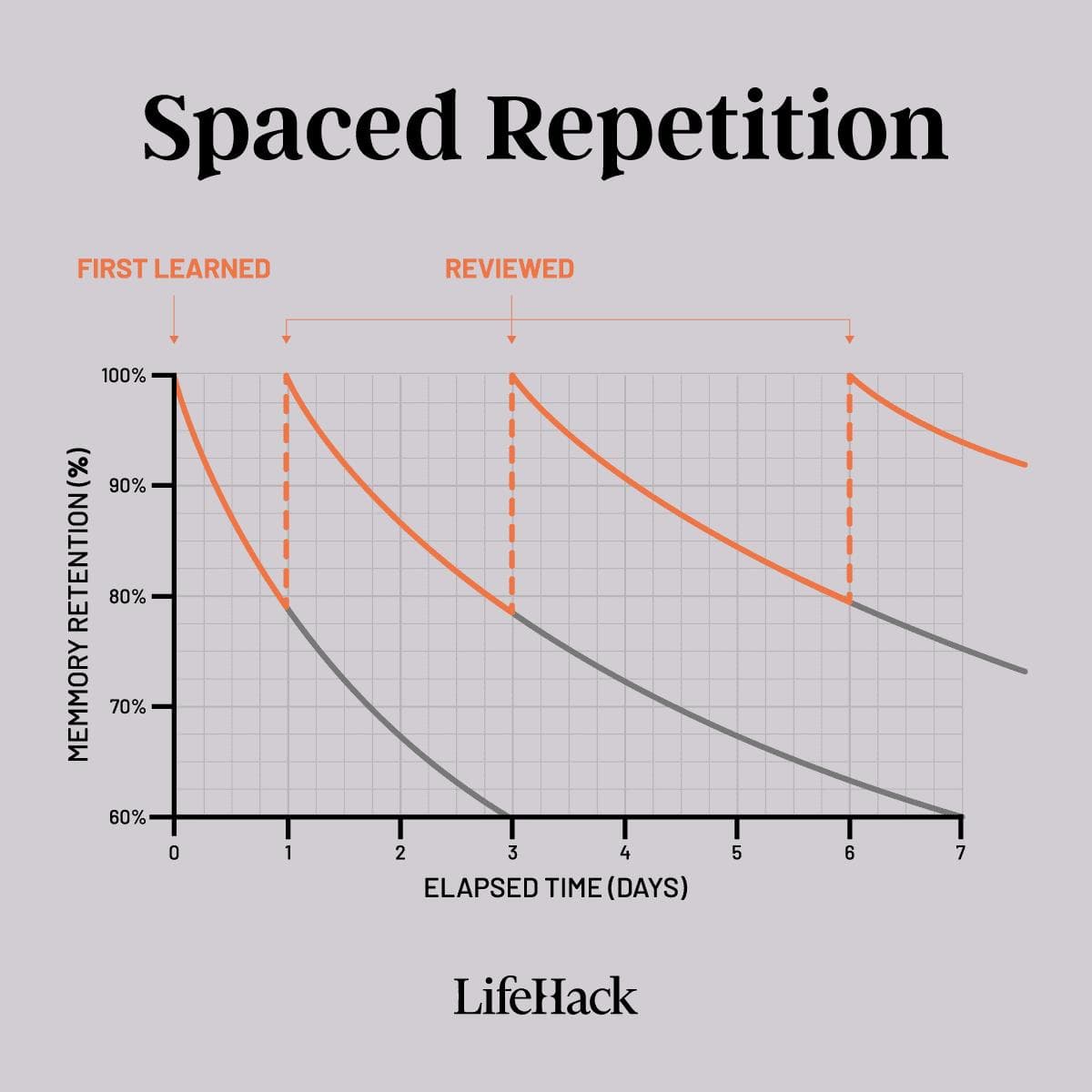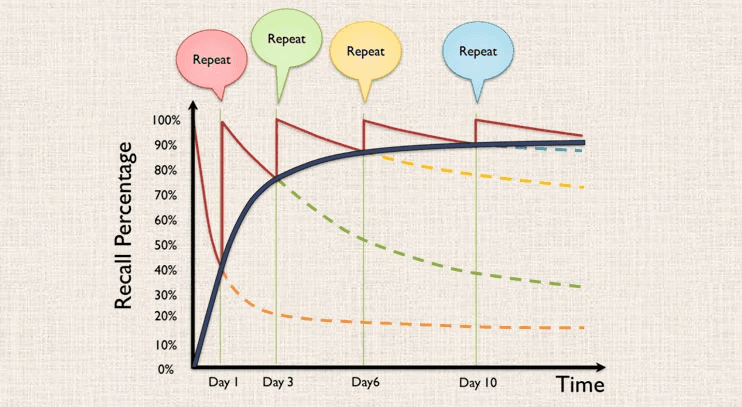Spaced Repetition as a Study Technique

Jasper Apos
Computer Science

The Pitfalls of Procrastination: A student's Struggle with Cramming
As midterm week approached, I found myself in the all-too-familiar situation of being buried under a mountain of textbooks and lecture notes. Despite my best intentions to stay on top of my studies, procrastination had once again reared its ugly head, leaving me with no choice but to resort to my tried-and-true method: cramming. The days leading up to the exams were a blur of frantic reading, highlighting, and scribbling down hastily written notes. I told myself that this time would be different, that I would finally break the cycle of procrastination, but here I was again, burning the midnight oil in a desperate attempt to cram weeks' worth of material into my already overloaded brain. As the hours ticked by, my anxiety mounted. The sheer volume of information I needed to absorb seemed insurmountable, and with each passing minute, the weight of my impending exams felt heavier and heavier.
But it wasn't just the stress that weighed on me—it was the realization of how much I had let myself down. Despite knowing full well the consequences of procrastination and cramming, I had fallen into the same trap time and time again. Each semester, I promised myself that I would do better, that I would manage my time more effectively and stay on top of my studies. And yet, here I was, facing the same old dilemma once again.
As I sat bleary-eyed at my desk, surrounded by a sea of textbooks and half-empty coffee cups, I couldn't help but feel a pang of regret. Regret for the hours wasted procrastinating when I could have been studying. Regret for the opportunities missed because I hadn't put in the necessary effort. And most of all, regret for allowing myself to fall into this cycle of self-sabotage time and time again.
In the end, the exams came and went, and I emerged battered and exhausted but somehow still standing. And as I reflected on the experience, I knew that something had to change. I couldn't keep living like this, constantly scrambling to catch up and always feeling like I was one step behind.

It was time to break free from the shackles of procrastination and embrace a new approach—one rooted in discipline, organization, and above all, self-awareness. And while the road ahead would undoubtedly be challenging, I knew that it was the only way forward if I wanted to unlock my full potential as a student and as a person.
Unlocking Academic Success: The Power of Spaced Repetition
Amidst the chaos of midterm week and the aftermath of my own procrastination-induced cramming session, I stumbled upon a ray of hope—a study technique known as spaced repetition. Intrigued by its potential to revolutionize my approach to learning, I delved into the intricacies of this method, eager to understand how it could offer a lifeline amidst the sea of academic stress. Spaced repetition, at its core, is a simple yet powerful concept: rather than attempting to cram large amounts of information into our brains in a single sitting, it advocates for a more gradual and strategic approach to learning. The key idea is to revisit and review material at increasing intervals over time, allowing for better retention and deeper understanding.
But how exactly does spaced repetition work? At its essence, it capitalizes on the psychological phenomenon known as the spacing effect, which suggests that information is better retained when it is revisited at spaced intervals rather than in one continuous session. By spacing out our review sessions, we give our brains the opportunity to reinforce and solidify the connections between pieces of information, leading to more effective long-term retention.

The beauty of spaced repetition lies in its adaptability to individual learning needs. Through the use of specialized spaced repetition software or even simple flashcards, students can create personalized study schedules tailored to their unique pace and preferences. Whether it's reviewing vocabulary words for a foreign language class or revisiting key concepts from a lecture, spaced repetition offers a flexible and customizable approach to learning.
But perhaps the most compelling aspect of spaced repetition is its potential to break the cycle of procrastination and last-minute cramming. By incorporating regular review sessions into our study routine, we can mitigate the need for frantic, eleventh-hour studying and instead cultivate a more sustainable and effective approach to learning.
As I embarked on my own journey of implementing spaced repetition into my study routine, I found myself pleasantly surprised by its efficacy. Gone were the days of frantic cramming sessions and sleepless nights; in their place emerged a newfound sense of confidence and control over my academic pursuits.
In the end, spaced repetition offered not just a study technique, but a guiding principle—a reminder that learning is not a sprint, but a marathon. And as I continue on my academic journey, I am grateful for the lessons learned and the newfound tools at my disposal, courtesy of the transformative power of spaced repetition.